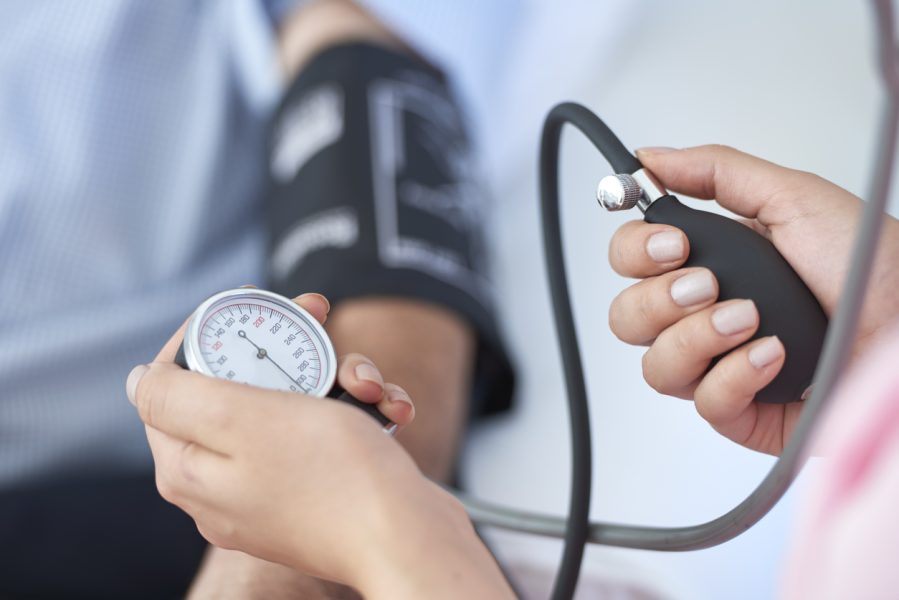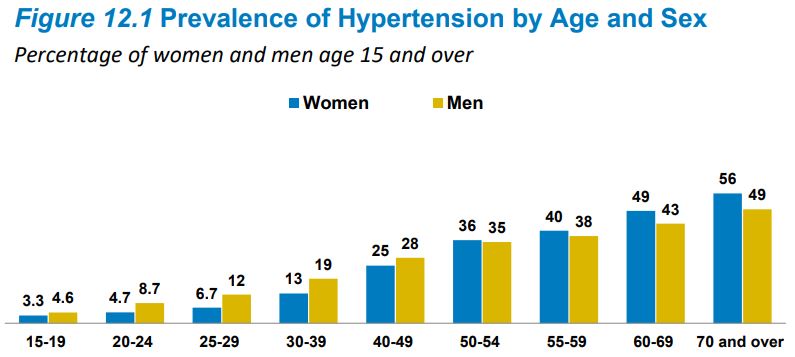
BP nation: Over 28% of Indian adults are hypertensive, says ICMR survey
For both women and men, the southern states have a higher prevalence of hypertension than the national average, as per the survey

The National NCD Monitoring Survey (NNMS), which studied those aged between 18 and 69 years, has found that 28.5% of adults in India are hypertensive.
The NNMS 2017-2018 was conducted by the Indian Council of Medical Research (ICMR) – National Centre for Disease Informatics & Research (NCDIR) through funding from the Ministry of Health and Family Welfare.
Also read: Obesity goes up in India, fertility rate dips: National Family Health Survey
The survey followed a multi-stage cluster sampling design covering the age range of 15-69 years. The estimated sample size for the survey was 12,000 adults (18-69 years) and 1,700 adolescents (15-17 years).
The survey report said that the mean systolic and diastolic blood pressure (including people taking medication for hypertension) among adult respondents was 124.1 mmHg and 80.9 mmHg, respectively.
“Nearly three out of 10 respondents (28.5%) had raised blood pressure. An increase in the proportion of the population with raised blood pressure was observed in urban areas and with increasing age. Newly detected cases with raised blood pressure were 20.6%, while 7.9% were reported being diagnosed previously,” the survey report noted.
Source: National NCD Monitoring Survey (NNMS)Among the 10,592 adult respondents aged 18-69 years, 28.5% had raised blood pressure, of which 27.9% were aware of their raised blood pressure status. Of those who were aware, 52.1% were on treatment and of those who were on treatment, 44.4% had their blood pressure in control.
Also read: Over 44% Kerala men think women who use contraceptives are promiscuous: Survey
Hypertension Stage 1 was described as “adults aged 18-69 years with systolic blood pressure between 140-159 mmHg or diastolic blood pressure between 90-99 mmHg among those measured”. And, Hypertension Stage 2 as “adults aged between 18-69 years with systolic blood pressure ≥160 mmHg or diastolic blood pressure ≥100 mmHg among those measured”.
“NCDs are the leading cause of death in the world. The four main NCDS – cardiovascular disease, cancer, chronic lung diseases and diabetes – kill three in five people worldwide. In India, the four main NCDs account for nearly 57% of premature deaths,” Dr. Roderico H Ofrin, World Health Organization (WHO) Representative to India, said in the report.
Also read: 45% women, men justify beating wives: National Family Health Survey
In 2018, ICMR had said, “Hypertension has been long recognised as one of the major risk factors for cardiovascular disease and premature deaths worldwide, and is one of the most common lifestyle ‘Silent Killer’ diseases today, with every third person having suffered from it.
“International data suggest that fewer than half of those with hypertension are aware of their condition. Raised blood pressure — hypertension — causes approximately 9.4 million deaths each year worldwide, and many of those who die never knew they were affected. There are no symptoms and some only find out after suffering a heart attack or stroke, or are diagnosed with something else, such as heart or kidney disease.”
NFHS-5 findings
Meanwhile, the National Family Health Survey (NFHS-5), 2019-21 report said that 21% of women and 24% of men aged 15 and over have hypertension, and 39% of women and 49% of men aged 15 and over are pre-hypertensive.

“An individual is classified as having hypertension if he/she has a systolic blood pressure level greater than or equal to 140 mmHg, or a diastolic blood pressure greater than or equal to 90 mmHg, or he/she is currently taking antihypertensive medication to lower his/her blood pressure,” the survey said.
Based on blood pressure measurement during the survey, 21% of women aged 15 and over have hypertension, including 12% with mildly elevated blood pressure, 4% with moderately elevated blood pressure, and 2% with severely elevated blood pressure, and 44% of women have blood pressure within the normal range. Almost two-fifths (39%) of women are pre-hypertensive and 1% of women are currently taking antihypertensive medicine and have their blood pressure in the normal range, it added.
The prevalence of hypertension is higher among men aged 15 and over than among women age 15 and over. Twenty-four per cent of men age 15 and over have hypertension, including 16% with mildly elevated blood pressure, 4% with moderately elevate blood pressure, and 2% with severely elevated blood pressure. Thirty per cent of men have normal blood pressure and 49% are pre-hypertensive. About 1% of men are currently taking antihypertensive medicine and have their blood pressure in the normal range.
The prevalence of hypertension is higher among Sikhs (37% for men and 31% for women), Jains (30% for men and 25% for women), and Christians (29% for men and 26% for women) than the rest of the religions.
There is a consistent and steep increase in the prevalence of hypertension with increases in the body mass index (BMI) for both women and men. Forty per cent of obese men and 28 percent of obese women are hypertensive.
The prevalence of hypertension among women is highest (35%) in Sikkim. The prevalence of hypertension among men aged 15 and over ranges from 15 percent in Dadra & Nagar Haveli and Daman & Diu to 42 per cent in Sikkim.
For both women and men, the southern states have a higher prevalence of hypertension than the national average, as per the survey.
ICMR’s tips to maintain a healthy blood pressure
- Keep weight healthy
- Exercise regularly (average of 30 minutes a day and yoga)
- Eat plenty of fruits and vegetables every day
- Cut down on salt and reduce intake of fried food
- Cut down on fat and sugar
- Do not smoke
- Reduce your caffeine intake
- Cut down on alcohol
- Relax: Stress contributes to raising blood pressure. So, avoid stress where possible and allow time for relaxation


